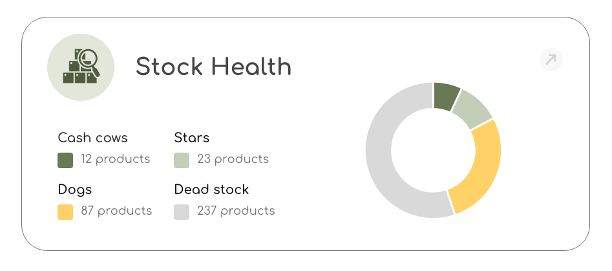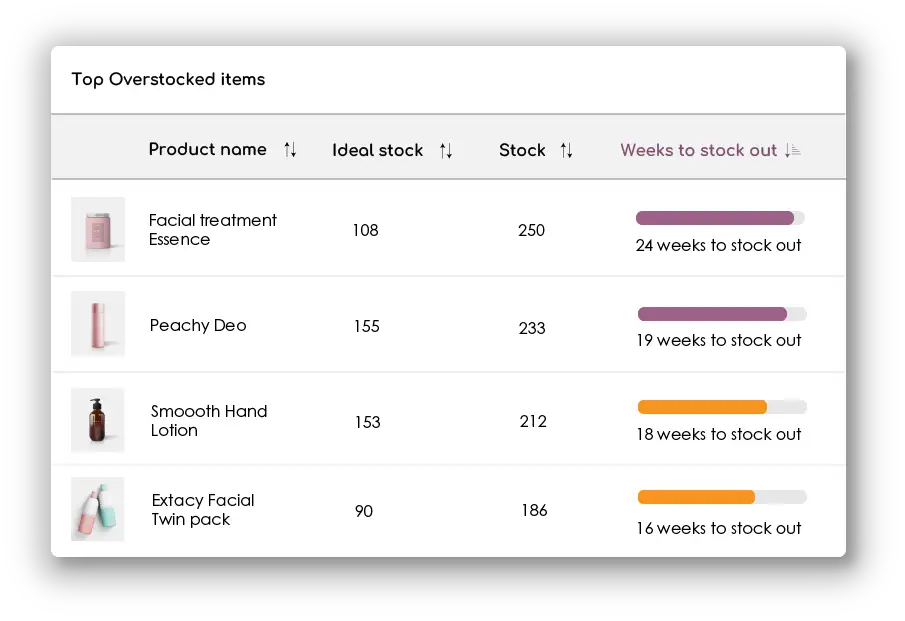Artificial Intelligence, Human Interpretation
In recent years, machine learning (ML) and artificial intelligence (AI) have emerged as game-changing technologies, transforming industries, including retail.
For small business owners, understanding these technologies can unlock new efficiencies, help drive sales, and improve customer experiences.
However, integrating ML and AI into retail operations also comes with challenges that should be weighed carefully.
To appreciate the impact of AI in retail today, it’s helpful to look back at how the retail industry has evolved—particularly in merchandise planning, assortment planning, and supply chain management.
Table of Contents
A brief history of merchandise planning
Merchandise planning, the process of selecting and purchasing products to stock, has always been a core component of retail operations. In the past, retailers relied heavily on manual methods, experience, and intuition to predict demand and plan inventory levels.
Assortment planning, which is the selection of products to offer across different categories, was often done based on regional preferences, seasonality, and historical sales trends. These methods were labor-intensive and prone to error, leading to overstocking or understocking, both of which hurt profitability.
With the advent of computerised systems in the late 20th century, merchandise planning became more data-driven. Basic algorithms and statistical tools helped retailers forecast demand, but these tools had limitations, particularly when dealing with large volumes of data or rapidly changing consumer preferences.
In the early days of retail, merchandise and assortment planning were done on a much smaller scale, particularly by “mom-and-pop” stores that dominated city centers. These small, family-owned shops catered to their local communities, and their inventory was often a reflection of their intimate understanding of customer preferences. Shop owners relied on personal relationships with customers to predict demand and make buying decisions. Without the aid of modern technology, they used instinct and years of experience to determine what products to stock and when to replenish.
The Rise of Department Stores and Chain Retailers
By the late 19th and early 20th centuries, the rise of department stores and chain retailers marked a significant shift in merchandise planning. With larger store footprints and a broader range of products, these businesses needed more formalized methods for managing inventory and assortment. Retailers began to rely on basic data, such as sales records, to plan their assortments. However, most decisions were still heavily influenced by human judgment and market intuition.
The introduction of supply chain management systems and early computerization in the 1960s and 70s helped streamline these processes. Large retailers could now plan their assortments based on historical sales data and seasonality. Department stores, for instance, might carry winter coats and seasonal items only during specific months, adjusting stock levels accordingly.
This data-driven approach improved efficiency but was still limited by the technology of the time, which couldn’t handle vast amounts of data or provide real-time insights.
The Impact of E-Commerce and Online Retail
The rise of online retail in the late 1990s and 2000s marked a pivotal moment in merchandise and assortment planning. Retailers no longer had the physical constraints of brick-and-mortar stores, such as shelf space and geographical location. E-commerce platforms could offer an almost limitless range of products, allowing businesses to expand their assortments dramatically.
However, this expansion presented new challenges. Online retailers needed to optimize not just for local preferences but for a global customer base with diverse needs and tastes. Managing a vast assortment of products across different categories and regions required more sophisticated technology.
As a result, algorithms and early AI systems began to play a crucial role in helping online retailers plan assortments and manage inventory.

The Shift to Data-Driven Assortment Planning
As online retail grew, traditional methods of assortment planning became outdated. The sheer volume of data generated by online sales—customer behavior, browsing history, purchase patterns—necessitated new tools. Retailers began using data analytics and machine learning to create more dynamic and personalized assortments.
For example, Amazon, one of the early pioneers in online retail, was able to fine-tune its product recommendations and optimise its assortments using data-driven insights.
Unlike physical stores, which could only stock a limited number of products, online platforms could offer an extensive selection without worrying about shelf space. This allowed for real-time adjustments based on consumer behaviour, with algorithms constantly updating which products were featured or recommended.
AI tools have since evolved to help businesses of all sizes optimise their assortments. These tools can analyse purchasing patterns in real time and suggest the right mix of products to meet demand. In addition, they can personalise recommendations for individual customers, creating a tailored shopping experience that increases conversion rates and customer satisfaction.
The Current Landscape - Omnichannel Retail
The integration of physical and online retail—known as omnichannel retail—has further complicated merchandise and assortment planning. Retailers today must manage inventory across multiple channels, ensuring that the right products are available both in-store and online. AI and machine learning are critical in synchronizing these operations, helping retailers optimize their assortments for both physical and digital spaces.
For instance, an omnichannel retailer might use AI to determine which products sell better in specific locations and then adjust their in-store assortments accordingly. At the same time, their online storefront can offer a broader selection, using machine learning to recommend products based on customer preferences.
In this way, the optimization of assortments has become a sophisticated, data-driven process that is no longer limited by intuition or shelf space. Retailers now have the tools to offer personalised, relevant assortments to customers, whether they shop in-store, online, or through a combination of both.
How Small Businesses can Leverage AI for with Shelf Planner
While large online retailers were the first to embrace these technologies, with Shelf Planner AI-driven assortment planning is now accessible to small businesses as well.
For example, an independent boutique can use machine learning algorithms to predict the most popular items for the upcoming season based on local customer data and broader market trends.
Similarly, a small e-commerce retailer can leverage machine learning to manage stock levels, ensuring they are not overstocked or understocked on key items.
AI is particularly valuable in online retail because it allows businesses to optimise their assortment dynamically.

Unlike physical stores, which are bound by space and location, online businesses can adjust their product offerings in real time based on customer feedback, search trends, and competitor actions. This ability to pivot quickly helps small retailers remain competitive in a fast-paced marketplace.
Conclusion
From the humble beginnings of mom-and-pop stores to the sophisticated world of online and omnichannel retail, merchandise and assortment planning have evolved dramatically. What was once a manual, intuition-based process is now driven by AI and machine learning, enabling businesses to optimize their inventory and cater to customer preferences in real time.
For small business owners, understanding and embracing this shift can open up new opportunities for growth. AI tools, once reserved for large corporations, are now more accessible than ever, allowing even the smallest retailers to optimize their assortments, improve customer experiences, and stay competitive in the fast-changing retail landscape.
Despite the challenges, the future of retail is undoubtedly shaped by AI and machine learning, and small businesses stand to benefit immensely from these technologies. While the initial investment and learning curve may be steep, the long-term gains—greater efficiency, improved customer experiences, and optimised supply chains—make it a worthwhile endeavor.
For small business owners, the key is to start small and scale as you go. Focus on integrating AI tools in areas where you can see immediate value, such as personalised marketing or inventory management. Many solutions are now available that are designed specifically for small and medium-sized enterprises, offering affordable, scalable options that don’t require a massive overhaul.
In the end, AI and machine learning aren’t just for large retailers—they can be powerful tools for small businesses as well. With careful planning and a strategic approach, these technologies can help level the playing field and give you the competitive edge you need in today’s fast-changing retail landscape.
Customer testimonials
Hear from our customers
Highly recommend Shelf Planner to any retailer"
Riena Pfeiffer
Founder & CEO
Drielle Oliveira
Founder
Mats Bergengren
Owner
Inventory planning was a pain until we found Shelf Planner. Purchase orders are a breeze and the app gave us all the tools to understand our inventory needs."
Elena
Founder
Marc Tarrius
Founder
Automated inventory management with Shelf Planner
Shelf Planner’s AI-based inventory management platform supports you with all the tools you need to optimise your business.







